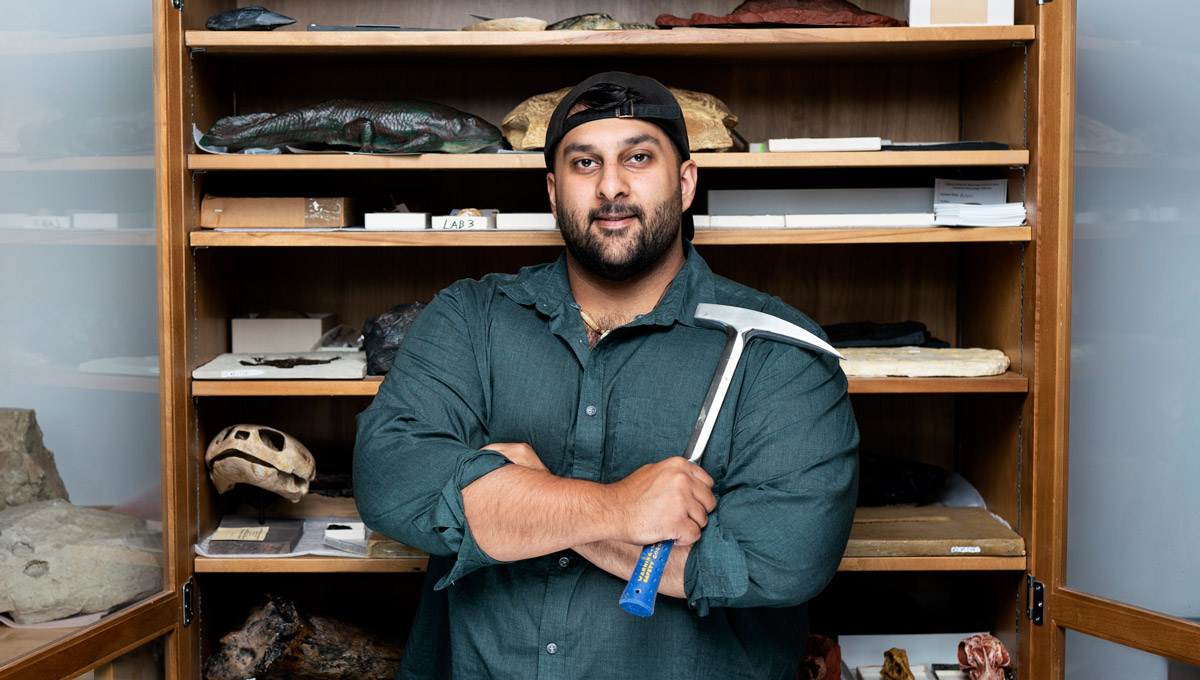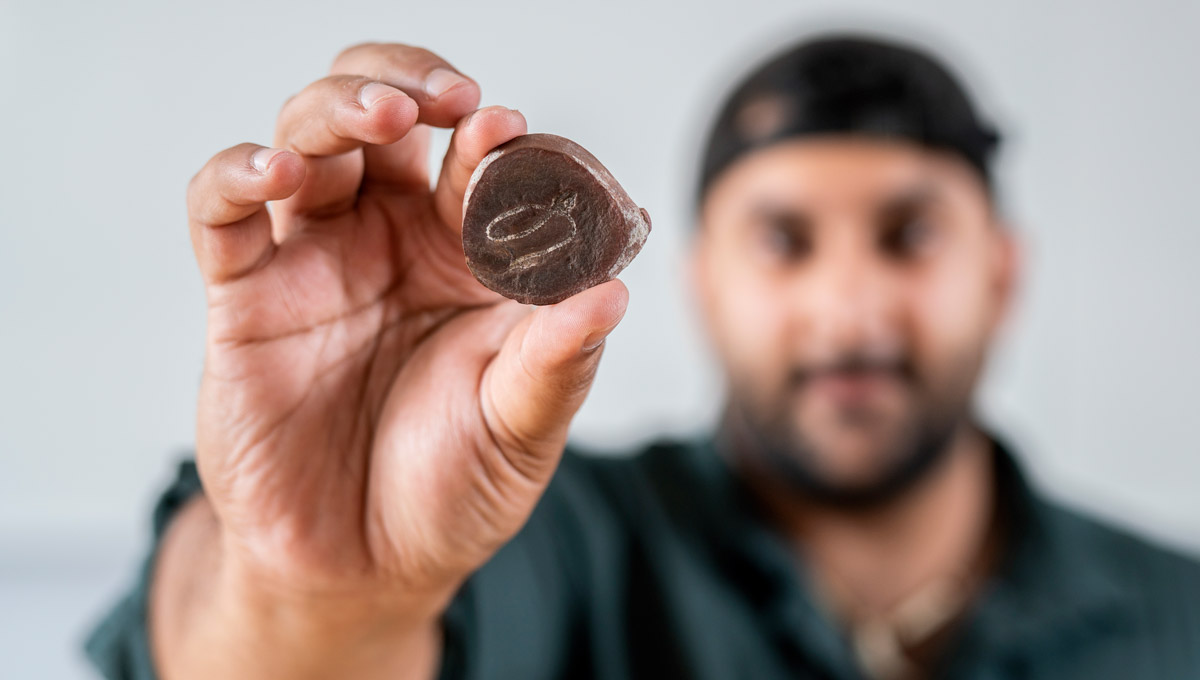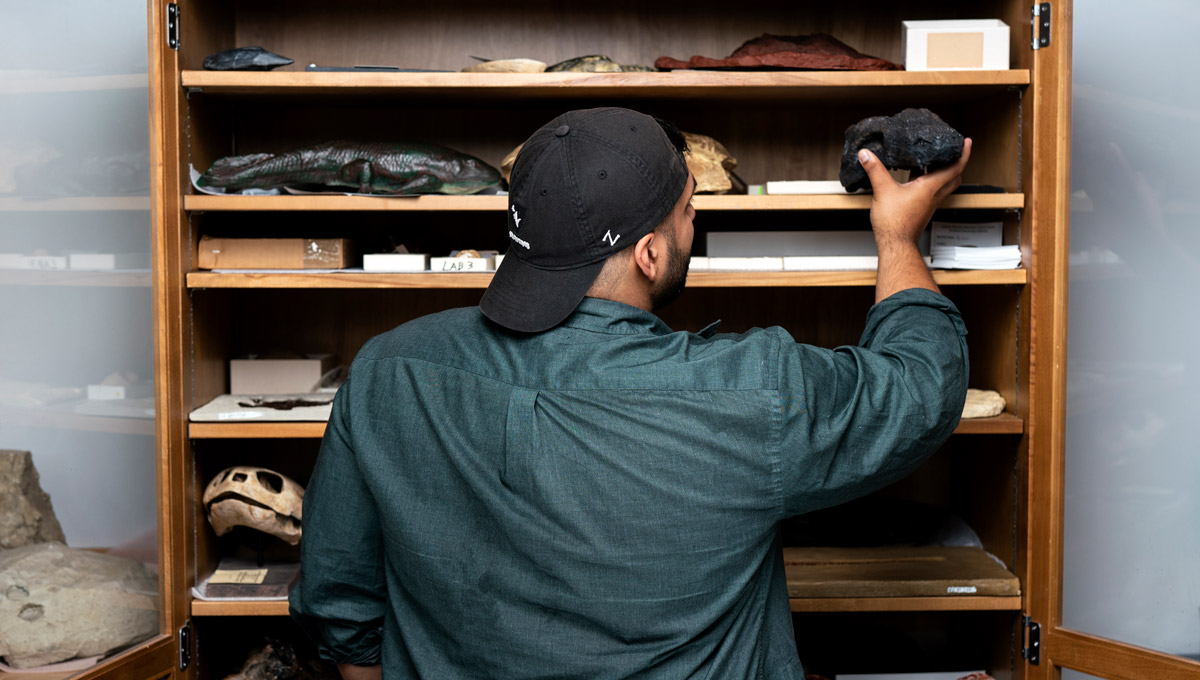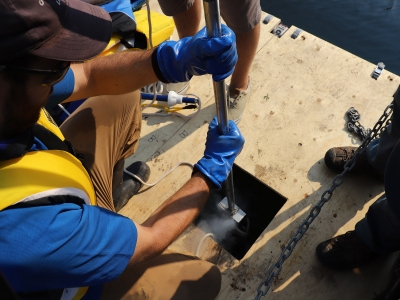By Tyrone Burke
Photos by Chris Roussakis
Hell hunter and devil digger. When Arjan Mann names a species, he doesn’t mess around.
As part of his PhD research into carboniferous period creatures, the Carleton Earth Sciences student identified two new species. The two species date from about 310 million years ago, when the ancestors of modern reptiles, birds and mammals were moving permanently on to land.
The first he named Diabloroter — devil digger. Mann studied the specimen at the Field Museum in Chicago, where it had been preserved in a devilishly red latex peel. Its hard skull is similar in structure to modern animals that burrow, digging into the earth by compacting soil with their heads.
The second of the two creatures was an elongated, short-limbed animal that would have moved by sidewinding — much like a modern snake. He called it Infernovenator (hell hunter) to stick with the hellish theme.

Arjan Mann
Known as recumbirostrans — or colloquially as microsaurs — the two creatures were preserved in the Francis Creek Shale at Mazon Creek, Illinois. The site is about a 90-minute drive south of Chicago and has been attracting palaeontologists and collectors since the early 1900s. A boom in private collecting that began in the 1960s depleted it of its most obvious specimens and palaeontologists moved along to more productive locations.
“Researchers grew disinterested after Mazon Creek became really heavily collected,” says Mann.
“It was a hassle to actually find specimens without having to pay for them, and some collectors didn’t want to sell. They were like extreme hobbyists, with huge collections of hundreds of thousands of concretions. Lots of invertebrates, worms and fish — it would be their life’s joy.”

Extremely Rare Early Reptiles
But tetrapods — organisms with four limbs, such as early reptiles or amphibians — are extremely rare there.
“One in a million concretions at Mazon Creek is a tetrapod,” says Mann. “It’s not worth the bang for your buck to go and collect there for a field season. Researchers prefer to go to Carboniferous sites like Joggins, Nova Scotia, or Permian age sites in the U.S.”
But as collectors depleted Mazon Creek’s most readily available riches, they accumulated a cache of fossils. Many of those collectors have since passed away, and some of their heirs have donated these fossil collections to local museums.
“All of these organisms are just sitting in the museum already,” says Mann, whose interest in palaeontology was sparked as a child when his mother worked at the Royal Ontario Museum in Toronto while she was doing her master’s and he had the freedom to explore the galleries.
“The idea with this project was to go and look at what’s been collected over the years, revise the old fauna, and include this new data. The two species described are just the first of many that will be coming out from the site.”

Filling in the Fossil Record
Creatures such as Diabloroter and Infernovenator could help fill in some of the blank spaces in the fossil record and build a better understanding of how and when creatures migrated permanently from the sea on to the land. That shift was facilitated by an amnion — a membrane that keeps fluid around an animal’s eggs so they don’t need to be in water to reproduce, a trait that reptiles, birds and mammals all share.
“It’s a matter of debate as to whether these animals are actually reptiles or not,” says Mann. “If they are, they insinuate that the diversification of early amniotes — whose descendants include us — happened way earlier than previously thought. That would be a pretty big finding.”
Arjan Mann’s research was co-authored with his supervisor, Prof. Hillary Maddin, and appeared in The Zoological Journal of the Linnaen Society in May 2019.
Friday, August 2, 2019 in Faculty of Science, Research
Share: Twitter, Facebook



